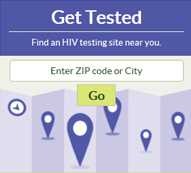CDC Presents New Estimates of HIV Incidence
Dear Colleague,
February 14, 2017
Today at the 2017 Conference on Retroviruses and Opportunistic Infections, researchers from the Centers for Disease Control and Prevention (CDC) presented new estimates of annual HIV infections, or HIV incidence, in the United States. These are the first national HIV incidence estimates to be published since 2012, encompassing the period from 2008 through 2014. They reveal that, overall, annual HIV infections declined substantially – a signal that national HIV prevention efforts are paying off.
CDC developed these national estimates using a new, more reliable estimation method that uses a person’s first CD4 cell count after HIV diagnosis. CDC selected the method based on a thorough scientific assessment of various methods, as described in a recent series of publications.1 , 2
The new method was made possible by recent improvements in HIV surveillance. Most importantly, CD4 cell count reporting at the time of diagnosis – which provides an indication of how advanced a person’s disease is when diagnosed – is now routine in most U.S. states and jurisdictions. Because CD4 cell count data are already captured by existing HIV surveillance systems, incidence estimates can be produced quickly and cost-effectively, compared to older methods. The CD4-based method is more reliable than older back-calculation methods that required historical data from early years of the epidemic when reporting was less complete, and the biomarker-based method that was subject to continued changes in testing technology.
Overall, annual HIV infections declined 18 percent from 2008 to 2014, from an estimated 45,700 to 37,600. Declines were seen in a number of populations and geographic areas: incidence fell sharply among heterosexuals (36%) and people who inject drugs (56%), and several states and Washington, D.C. made substantial, statistically significant, progress in decreasing annual HIV infections. The declines are due in part to progress in diagnosing infections among people living with HIV and ensuring they have access to early, ongoing treatment.
Yet the data also show that tough challenges remain, particularly for communities in the South and among gay and bisexual men. While Southern states represented 37 percent of the U.S. population in 2014, they accounted for 50 percent of new HIV infections. Annual infections remained stable among men who have sex with men (MSM), who accounted for 70 percent of new infections in 2014, though progress is mixed. Encouraging declines were seen among young MSM aged 13-24 and white MSM (18% in both groups), but increases occurred among MSM aged 25-34 (35%) and Hispanic/Latino MSM (20%). Annual HIV infections were estimated to be stable among black MSM, an important sign of progress in comparison to the increases that were previously reported for earlier time periods.
CDC is further reviewing these estimates in combination with a range of other key data to build a more complete picture of what is driving HIV infections in specific groups. Interpreting these trends together with other data can provide a more concrete understanding of what may be happening on the ground. This information can help accelerate the progress we are already seeing while allowing other groups to more fully benefit, such as Hispanic/Latino MSM.
More broadly, HIV incidence estimates are one of several important tools for monitoring the burden of HIV infection and the impact of prevention and care programs. The agency intends to publish HIV incidence estimates annually, and is also assessing the best available set of metrics for tracking progress against national goals.
To accelerate progress toward the ultimate goal of no new HIV infections, CDC will continue to focus on closing the remaining gaps in HIV prevention, particularly in Southern states and among MSM of color. Efforts will continue to center on increasing the number of people who are aware of their HIV infection; preventing new infections by taking full advantage of the most cost-effective prevention tools, including treatment for people living with HIV and pre-exposure prophylaxis; and continuing to strengthen our nation’s HIV surveillance systems, which are the foundation of effective prevention.
We have more powerful tools to prevent HIV transmission than ever before. CDC remains committed to using the best available data and working alongside health departments, community-based organizations, and other partners to deliver these tools effectively and efficiently everywhere they are needed.
Sincerely,
/Jonathan Mermin/
Jonathan H. Mermin, M.D., MPH
RADM and Assistant Surgeon General, USPHS
Director
National Center for HIV/AIDS, Viral Hepatitis, STD, and TB Prevention
Centers for Disease Control and Prevention
www.cdc.gov/nchhstp
/Eugene McCray/
Eugene McCray, MD
Director
Division of HIV/AIDS Prevention
National Center for HIV/AIDS, Viral Hepatitis, STD, and TB Prevention
Centers for Disease Control and Prevention
www.cdc.gov/hiv
[ 1 ] Hall HI, Song R, Tang T, An Q, Prejean J, Dietz P, Hernandez AL, Green T, Harris N, McCray E, Mermin J. HIV Trends in the United States: Diagnoses and Estimated Incidence. JMIR Public Health Surveill, 2017;3(1):e8.
[ 2 ] Song R, Hall HI, Green TA, Szwarcwald CL, Pantazis N. Using CD4 Data to Estimate HIV Incidence, Prevalence, and Percent of Undiagnosed Infections in the United States. J Acquir Immune Defic Syndr; 2016 Aug 5. [Epub ahead of print]
- Page last reviewed: April 3, 2017
- Page last updated: April 3, 2017
- Content source:


 ShareCompartir
ShareCompartir


